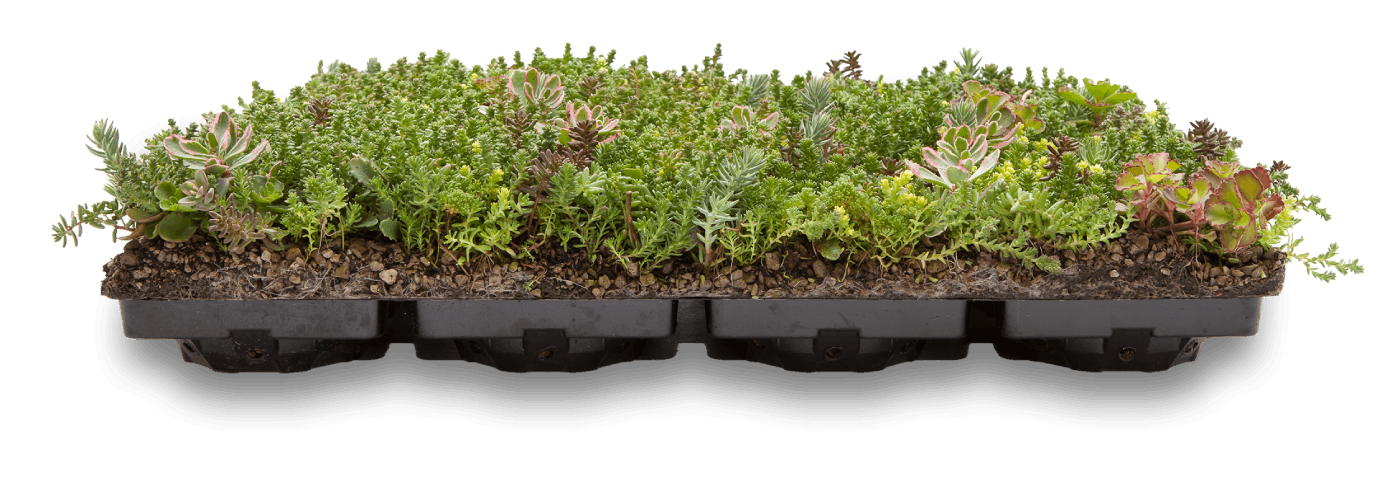

SEDUM ROOF
Advantages for climate AND THE environmenT
The Urban Heat Island effect
Sedum roofs improve the air quality

Sedum roofs for biodiversity
Sedum roofs absorb rainwater

Green roofs have long durability
Green roofs have a long life span. The organic roof remains attractive year after year, and has a life span of more than 50 years with correct operation and maintenance. Finally, a green roof has the advantage that it protects the underlying roofing felt from the sun’s decomposing UV rays, which prolongs the felt’s life span.
Read more about our access to sustainability here.
Better well-being from the sight of green roofs
Apart from the benefits of green roofs as a climate-friendly, sustainable and environmentally sound system solution, green surroundings also have benefits for our well-being. There has been significant research in recent years into the term Biophilia – the hypothesis that states that people’s well-being improves when nature becomes part of our near environment.
Many people feel that having green surroundings in sight reduces their stress level and increases their quality of life. Most people find it more agreeable, for example, to have views of green roofs in full bloom than black roof surfaces.
Sustainable construction and sustainable architecture is the future for all of us. Here you can find more info on our sedum roofs.

Sustainability made easy
Green roofs are an important part of sustainable construction, and we work continuously to improve our products’ profile. Products from Nature Impact are approved for use in buildings certified for Nordic Swan Ecolabel constructions, and our products also give points to the DGNB, amongst others. We have also drawn up EPDs for our sedum roofs.
The modern, sustainable roof solutions are easily accessible. Design and functionality are combined with a high level of aesthetic quality, which also makes the roofer’s job easier.
We have worked with leading Danish experts in hydraulics to design a module-based system that meets our high demands for erosion control. The module has been designed in such a way that it can be placed directly onto the underlying membrane and follow the contours of the roof.
The modules are placed close up with soil-to-soil contact on the building site. The plants will grow together across the trays. This ensures that gusts of wind do not affect our roofs, as a healthy and well-tended roof will grow into a coherent surface. This gives the roof a homogeneous appearance with no visible joints, and with correct maintenance the roof will stay attractive for many years.
